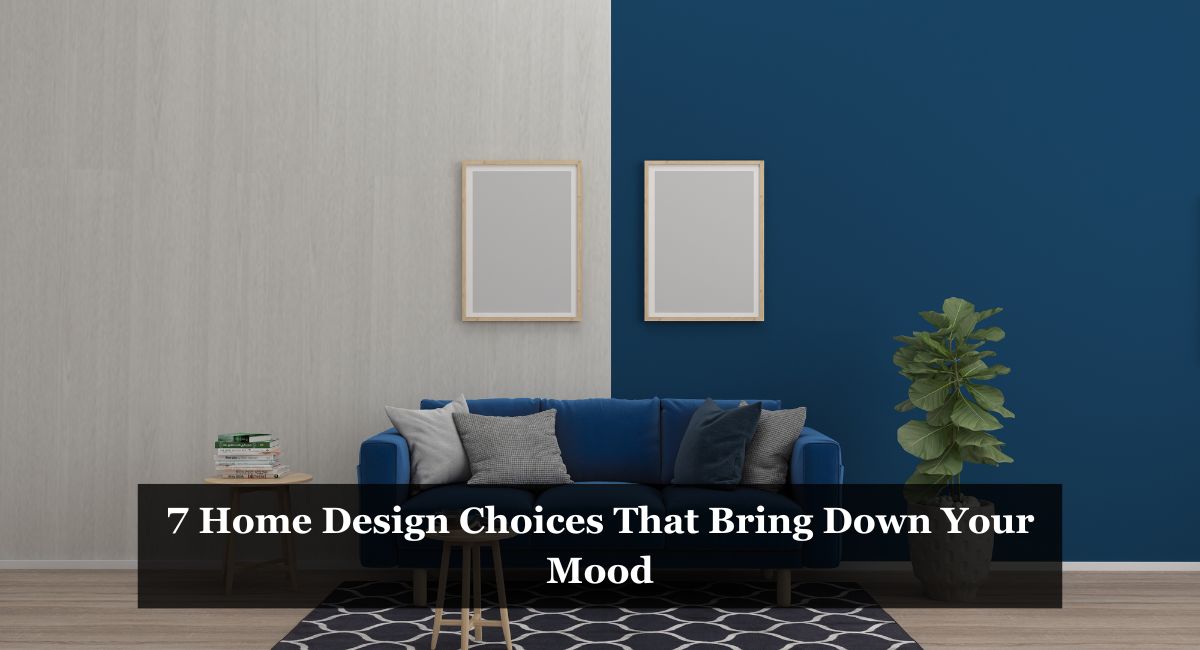Creating a welcoming and positive home environment is crucial for your overall well-being. However, certain design choices can inadvertently bring down your mood.
Here are seven common home design mistakes that could be affecting your happiness and how to avoid them:
1. Insufficient Lighting
Lighting plays a pivotal role in influencing mood. Dim or harsh lighting can lead to feelings of sadness or irritability.
Solution: Incorporate layers of lighting. Use a mix of ambient, task, and accent lighting to create a balanced and cheerful atmosphere. Natural light is particularly effective in boosting mood, so maximize it wherever possible.
2. Cluttered Spaces
Clutter can create a sense of chaos and stress. A disorganized home can make it difficult to relax and find peace.
Solution: Regular decluttering and organizing can significantly uplift your mood. Invest in smart storage solutions and make a habit of keeping only what you need and love.
3. Dull or Overwhelming Color Schemes
Colors greatly affect our emotions. Too dull, and a room feels lifeless; too bright or overwhelming, and it can be overstimulating.
Solution: Choose colors that evoke calmness and happiness. Soft blues and greens are known for their calming effect, while warm tones can create a cozy, uplifting space. Balance is key; use bold colors as accents rather than primary themes.
4. Lack of Personal Touch
A home that lacks personal elements can feel sterile and unwelcoming.
Solution: Personalize your space with items that have sentimental value or bring you joy. Family photos, artwork, or even a collection of favorite books can add warmth and personality to your home.
5. Uncomfortable Furniture
Comfort is crucial in a home. Uncomfortable furniture can lead to physical discomfort, which in turn affects your mood.
Solution: Invest in comfortable and ergonomic furniture. Your sofa, bed, and chairs should not only look good but feel good as well.
6. Poor Room Layout
An awkward or impractical room layout can lead to frustration and discomfort.
Solution: Arrange your furniture to facilitate ease of movement and interaction. Ensure there is enough space to move around comfortably and that the layout promotes a practical flow of activities.
7. Neglecting Nature
Lack of connection with nature can lead to feelings of confinement and stress.
Solution: Bring elements of nature into your home. Indoor plants, natural materials, and even pictures of landscapes can have a calming effect and improve air quality.
Conclusion
Your home should be your sanctuary, a place where you can relax and rejuvenate. By being mindful of these design choices and making small adjustments, you can create a more positive and mood-enhancing environment.
Remember, the goal is to create a space that reflects your personality and caters to your comfort, ultimately contributing to a happier and healthier you.
-
The Top 10 Superfoods for Brain Health, Weight Loss, and More

Incorporating superfoods into your diet can significantly enhance your overall health, providing essential nutrients that promote brain function, aid in weight loss, and contribute to various other health benefits. Here’s … Read more
-
Coke Zero vs. Diet Coke

For decades, Coca-Cola has offered two sugar-free cola options: Diet Coke and Coke Zero. Both beverages boast zero calories and zero sugar, leaving many consumers wondering – what’s the real … Read more
-
A New Study Says Gray Hair May Be Reversible

Hair color comes from melanin, a pigment produced by melanocyte stem cells located at the base of hair follicles. These melanocyte stem cells go through different stages, and at each … Read more
